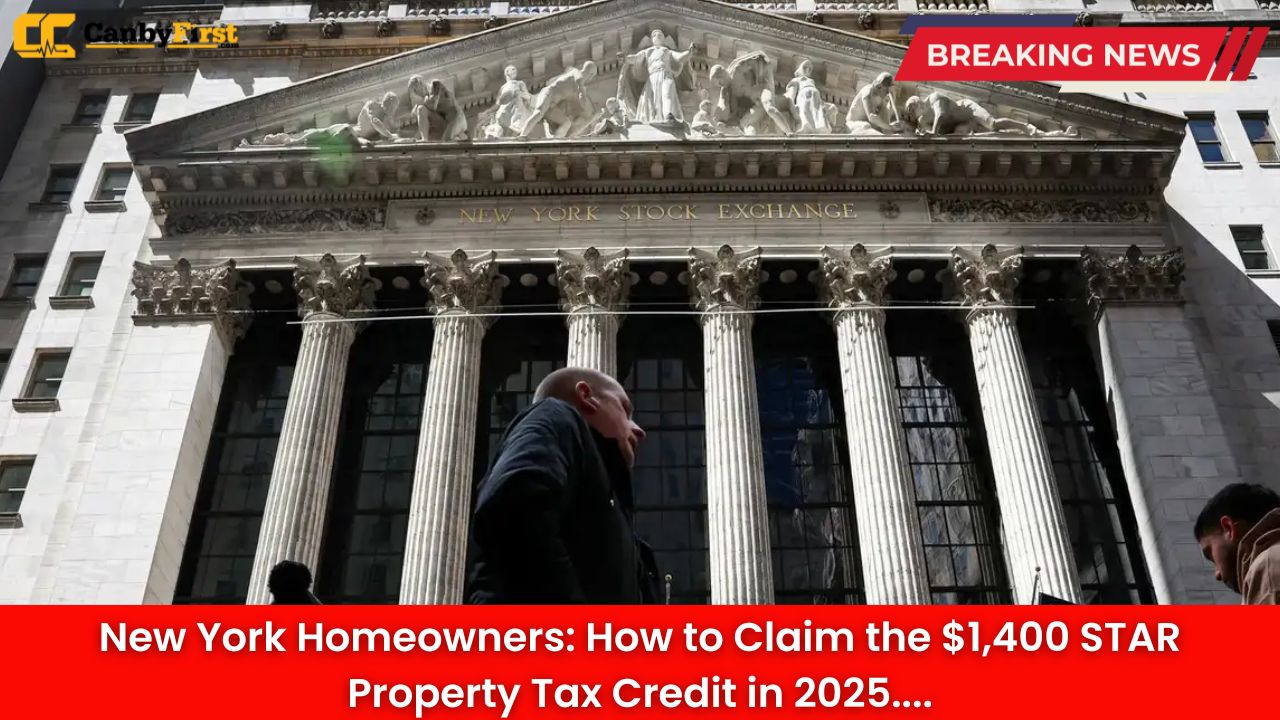New York homeowners have a reason to welcome 2025 on a hopeful note, as the state has confirmed that eligible residents can claim the School Tax Relief (STAR) property tax credit worth up to $1,400 this year. Designed to ease the burden of rising housing costs and school taxes, this tax break continues to be one of the most valuable programs available to property owners in the state.
What is the STAR Property Tax Credit?
The STAR program, short for School Tax Relief, was introduced as a way to provide property tax relief to New York homeowners by reducing the cost of funding local school districts. Instead of issuing deductions directly off the property tax bill, many homeowners now receive the STAR benefit in the form of a rebate check or direct deposit into their bank account.
There are two key variations of the program:
Also Read
-
Basic STAR – available to most homeowners with annual household incomes up to $500,000.
-
Enhanced STAR – specifically designed for seniors (65 years and older) with incomes below a certain threshold, providing greater relief.
In 2025, eligible households may qualify for a rebate of up to $1,400, depending on income and location.
Who Qualifies for the $1,400 Credit in 2025?
Eligibility for the STAR property tax credit depends on residency, income, and property type. To qualify in 2025:
-
The property must be the primary residence of the homeowner.
-
Homeowners must not exceed the income limit set by the program (currently $500,000 for Basic STAR).
-
For Enhanced STAR, senior homeowners must meet both the age requirement (65 or older in 2025) and the lower income limit.
-
The credit is calculated based on property location and school district, meaning the exact rebate amount can vary but is capped at $1,400.
How to Claim the STAR Credit in 2025
The process for homeowners to claim their STAR rebate has been streamlined over the years:
-
Check Your Registration – Homeowners must confirm they are registered with the New York State Department of Taxation and Finance. If they already claimed STAR in previous years, their information may carry over automatically.
-
Apply for STAR (if new) – First-time applicants can submit the STAR application online or by mail, providing proof of residency and income.
-
Verify Income Eligibility – The tax department uses reported income information to ensure applicants meet the required income thresholds.
-
Receive Payment – Payments are typically issued later in the year, either by check or direct deposit. Many homeowners receive their rebate in late summer or early fall.
What Makes the 2025 Credit Significant?
With inflation, rising home values, and record-high school taxes across many districts, the STAR credit has become more vital than ever. For middle-class families, the relief of up to $1,400 can represent a significant portion of annual property expenses. Senior households on fixed incomes often find the Enhanced STAR crucial for remaining in their homes during retirement.
Officials in New York have noted that the STAR credit is one of the most widely used tax relief programs in the state, reaching hundreds of thousands of households annually.
Key Dates to Remember
-
Spring 2025: Enrollment period for new STAR applicants begins.
-
Summer 2025: Applications should be submitted to avoid delays in payment.
-
Fall 2025: Most eligible households will receive rebate checks or direct deposits.
Common Mistakes to Avoid
While the program is generally straightforward, mistakes can delay or prevent payment:
-
Not updating income details with the state tax authority.
-
Forgetting to reapply when transitioning from Basic STAR to Enhanced STAR at age 65.
-
Assuming automatic enrollment when purchasing a new home without registering for STAR anew.
STAR Credit vs Property Tax Exemption
One common point of confusion is the difference between the STAR exemption and the STAR credit. While both provide relief, the exemption reduces school taxes directly on the bill, while the credit issues a rebate check. Since legislative reforms in past years, most new homeowners are only eligible for the credit, while long-time homeowners who had the exemption before certain cutoff dates may continue to benefit from that arrangement.
Why the STAR Program Remains Important
Throughout New York, property taxes remain among the highest in the nation. Homeowners, particularly in suburban areas of New York City, Long Island, and Westchester, pay school taxes that often exceed thousands of dollars annually. The STAR rebate, while not eliminating the expense, provides a cushion that makes homeownership somewhat more manageable.
State officials emphasize that the STAR program plays a critical role in balancing affordability and maintaining funding for public education. By directly offsetting costs for households, it ensures both taxpayers and schools continue to benefit from government support.
Frequently Asked Questions
1. How much is the STAR rebate in 2025?
The rebate can be worth up to $1,400, depending on income and school district rates.
2. Do I need to apply every year for STAR?
No, once you are registered, your eligibility is automatically verified each year. However, seniors transitioning to Enhanced STAR must reapply.
3. When will I receive the 2025 STAR check?
Most homeowners can expect payment in the late summer or early fall of 2025.
4. Can renters apply for STAR?
No, the STAR program only applies to homeowners living in their primary residence.
5. What happens if I sell my home in 2025?
If you sell your home, your STAR benefit will no longer apply to that property. The new homeowner must apply for STAR on their own.












